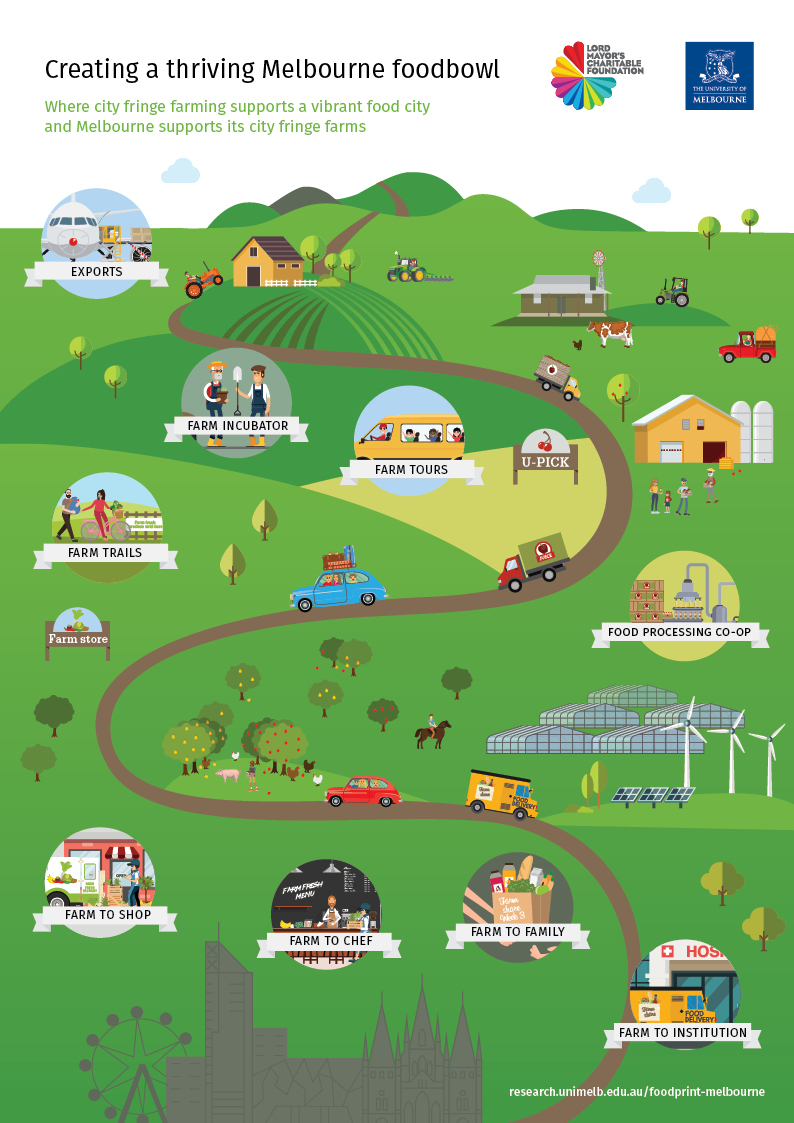Infographic: A thriving Melbourne foodbowl
This infographic showcases the mutually beneficial relationships that can be developed between cities and the farmers on their fringes.
The most recent Foodprint Melbourne report found that protecting farmland is not enough for farms to thrive on the city fringe. Strengthening links between cities and farms is key to improving farmer livelihoods and the viability of farming on the fringe.
This infographic showcases the mutually beneficial relationships that can be developed between cities and the farmers on their fringes.

The infographic shows how strong links between cities and local farmers can create a two-way exchange. Farmers can capture a higher share of the food retail dollar by selling direct to local consumers (through farmers markets or community-supported agriculture) or local businesses (such as cafes and restaurants). A new provenance brand could be introduced so consumers and businesses can easily recognise food from the area and support local farmers. City residents benefit from access to fresh, local produce and from opportunities to participate in agri-tourism activities on nearby farms (such as pick your own produce and farm-gate bike trails).
State and local governments could introduce food procurement standards so that government services, such as hospitals, prisons and "meals on wheels" programs, are encouraged to buy food from Victorian farmers. Government food procurement standards like these are already used in other countries, such as the United States and Canada.
Farmer incubators could be established to help new farmers access land and begin farming on the city fringe, mentored by experienced growers. Farmer-owned food-processing co-operatives could enable these growers to add value to their produce and take greater control of the food supply chain.
Sign up for the Foodprint Melbourne newsletter for project updates